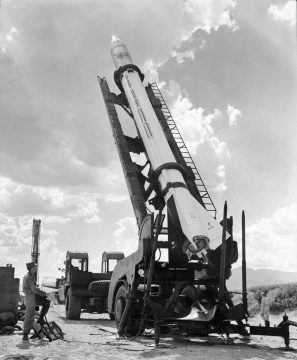Justin Vogt at The New York Times:
 The early years of the American nuclear program were dominated by men in the mold of Curtis LeMay, the Air Force general who had overseen the firebombing of Japan during World War II as commander of the Strategic Air Command (SAC). His philosophy of how to win modern wars, Kaplan writes, was simple: “Bomb everything.” For many years, LeMay exercised remarkable influence over nuclear policy by maneuvering to secure SAC’s near-total control of the arsenal while avoiding any meaningful civilian oversight. By 1960, he had put an enduring stamp on the atomic age through the Single Integrated Operational Plan, or SIOP, SAC’s list of all the nuclear weapons in the American arsenal and their intended targets. Reflecting LeMay’s maximalist approach to firepower and minimalist approach to sparing civilians, the SIOP called for the president to fire thousands of nuclear weapons in the event of an armed conflict with the Soviet Union. Nine would strike Leningrad; 23 would hit Moscow. A Soviet city similar to Hiroshima in population and density would be struck with four bombs that would together yield more than 600 times the blast power of the atomic bomb that the United States dropped on the Japanese city in 1945.
The early years of the American nuclear program were dominated by men in the mold of Curtis LeMay, the Air Force general who had overseen the firebombing of Japan during World War II as commander of the Strategic Air Command (SAC). His philosophy of how to win modern wars, Kaplan writes, was simple: “Bomb everything.” For many years, LeMay exercised remarkable influence over nuclear policy by maneuvering to secure SAC’s near-total control of the arsenal while avoiding any meaningful civilian oversight. By 1960, he had put an enduring stamp on the atomic age through the Single Integrated Operational Plan, or SIOP, SAC’s list of all the nuclear weapons in the American arsenal and their intended targets. Reflecting LeMay’s maximalist approach to firepower and minimalist approach to sparing civilians, the SIOP called for the president to fire thousands of nuclear weapons in the event of an armed conflict with the Soviet Union. Nine would strike Leningrad; 23 would hit Moscow. A Soviet city similar to Hiroshima in population and density would be struck with four bombs that would together yield more than 600 times the blast power of the atomic bomb that the United States dropped on the Japanese city in 1945.
more here.
